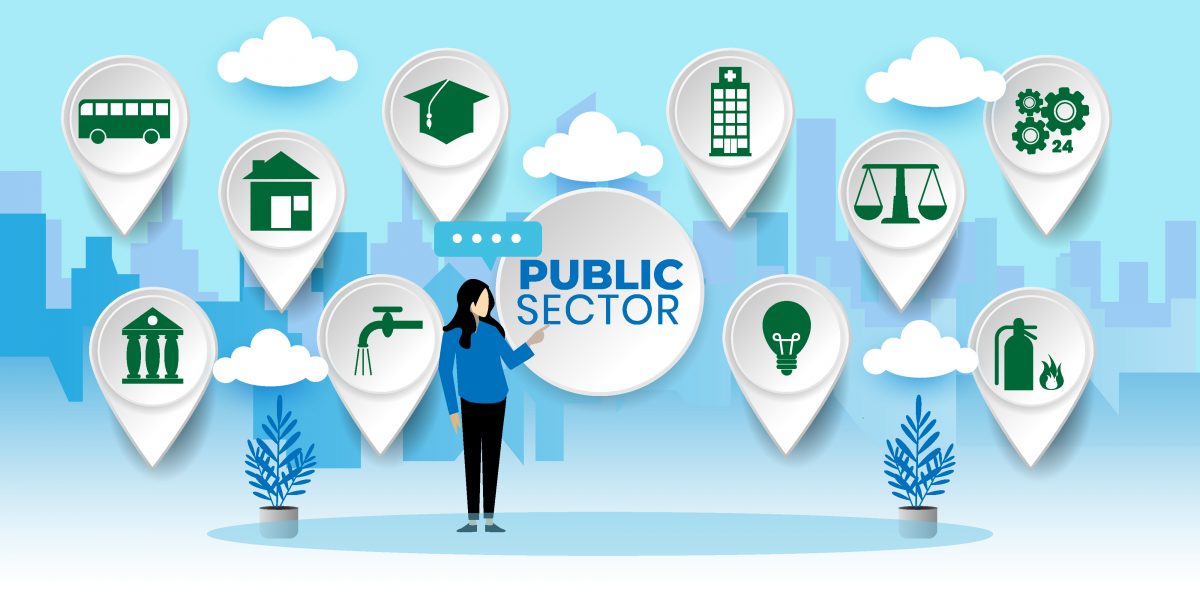Through the course of the 21st Century, the peak of digital technology has been experiencing exponential growth. According to data analysis, the technological frontier as of 2025 is expected to surge to $2.5 trillion [1], and not even the Covid-19 pandemic has slowed it down. These projections have their dichotomies based on innovation and necessity where major global stakeholders such as Governments, organizations for example the United Nations (UN), together with the private sector have contributed immensely.
Nonetheless, there’s still a wide rift in the assimilation of digital technology between developed and developing nations with less than 25 percent [2] of Sub-Saharan Africa having access to digital services. This does not undermine the efficiency of technology in governance.
Digital Technology Forging a Vision and Strategy
Strategic vision conceives a strong foundation in both sectoral and national governance. Embedding digital technology ecosystems in this process solders the frameworks even further, facilitating generative outcomes. Briefly, vision inculcates what is expected in the future and the reason it will matter, while strategy lays out an infallible roadmap to the realization of the vision.
From empirical and research data, fostering a technological framework towards the effective attainment of national goals and SDGs is dependent on several salient factors. Considering the inadequacy of some nations to adopt digital services per capita following a 2021 innovation index, the first effective strategy would be the assessment of their technology infrastructure; aligning their policies with Science, Technology, and Innovation (STI) [3].
Image from Technology and Innovation Report 2021 {unctad}
E-Governance Implementation in Pakistan
Conferring to a questionnaire-centered analysis [4]; the government of Pakistan has deployed a heterogeneous approach that will serve as a blueprint to facilitate integrated services to citizens and their sectorial departments. These areas include a base for technical infrastructure, a high-quality web portal, human resources, and an effective government policy backing the initiative.
Digitization in Governmental Oversight
Stakeholder panels and initiatives, global rules of conduct, and certification programs are some of the tools governments could deploy to affect the implementation of the strategies established. Considering the involvement of the UN and other stakeholders in global leadership, constitutionally based regulation becomes insufficient to address global goals especially in the emergency of digital authoritarianism. Thus, the executive arm of a government plays a critical role in the enactment of the vision.
Taking into account the factor of corruption which is prevalent in hierarchical governance, this is one of the main culprits that .need to be addressed. According to Human Development Index (HDI), nations ranking low on the innovation and development index are those struggling with corruption in their public service delivery. By bestowing the reins of governance to capable officials with integrity, augurs the implementation of the strategy timely and efficiently.
This foresees the best utilization and allocation of resources, keeping track of progress, and also re-evaluating the vision and strategy in accordance to change.
The Human Development Index 2021
European Union's Voting Tool
The conundrum of selecting the right candidate that will deliver on national and global agendas can be solved by a strategy such as the EU’s voting tool -YourVoteMatters.eu. This framework comprises a questionnaire ranging from public policies to politician's decisions which after completion, matches the voter with a candidate that aligns with their ideologies rather than party loyalty or other campaign-related biases.
Stakeholders, Research, & Innovation
A strategic vision accompanied by effective frameworks of governance and oversight could prove efficacious if integrated with an ecosystem that supports research, Development, and Innovation. Weaving in the private sector in the achievement of national goals champions not only the inclusive participation of the citizens but also drives the progress of the SDG. These three pillars become integral in the realization of socioeconomic and governance goals.
To fasten the technological capacities for innovation in governance, key government organizations could start by implementing practicable research, data analysis, and feasible technical experiments from learning institutions to tackle arising or antecedent obstacles. Funding promising or resourceful tech start-ups in exchange for equity or as a development fund and creating public policies favoring the technological ecosystems could prove propitious in the long haul.
On the grounds of 'two heads are better than one,’ bringing in various stakeholders would hasten the implementation of the strategies set. This gears up towards the attainment of the country's national vision and sustainable developmental goals accurately via the unification of different developmental frameworks and perspectives.
South Korea's Investment in the Future
Being a leading innovative nation according to Global Innovation Index, South Korea's pervasive reforms in concurrence with extensive investment in innovation has resulted in their advancements. This is within less than 100 years. Each leader has laid down a coherent framework that has catalyzed the successful outcome from scholars to a portfolio with global companies such as Samsung.
Source: Nature. South Korea’s Nature Index share in sciences
Commercialization of Technology and Governance
Considering the government's ability to control local and regional markets, exploiting a set of tactics that endorse the technology sector could come a long way in the attainment of global and national goals. This could not only propagate the effectual distribution of resources but also set up public policies that could advance the provision of public services technically.
In terms of commercialization, the government through learning institutions could actuate lab-based technical projects through funding to the mainstream market. This especially calls for lenient market policies and tax incentives which will not just promote these projects but also other technology start-ups from new technopreneurs venturing into the scene.
According to research, this strategic framework could promote socioeconomic developments, integrate collaboration between departments and organizations, foster innovation, and the protection of intellectual rights properties.
Technology Transfer in Malaysia
An initiative of the Malaysian government to commercialize the technology marketplace is its mandate to foresee a smooth transfer of technology-related programs' copyrights. This framework ensures that financially stable organizations take ownership of technical projects from learning institutions in exchange for shares or liquidity.
Upskilling and Retraining Frameworks
Since technology brings forth multitudinous benefits, it induces several socioeconomic drawbacks too in equipped governments. Robotics and AI are gradually automating some low oncome professions and this makes it requisite for further training of the workforce.
Despite also being a reorganization framework and not just riding through the technological wave, governments could see the implementation of policies that cushion the low-income workers facing imminent replacement from AI and Robotics. A great initiative was the economic stimulus which lessened the impact of the pandemic for both businesses and their employees. This time, such frameworks can be established solely to grapple with the loose-ends on employment posed by technology.
Through down skilling, reskilling, and upskilling programs, both government and organizational employees could retain their jobs, diversify their professional portfolio, and also, create new job opportunities.
United States' Amazon Upskilling Initiative 2025
Beth Galletti, a senior VP of People Experience and Technology in Amazon, highlighted the importance of investing in their employees. This was during the launch of the Mechatronics and Robotics Apprenticeship Program.
E-commerce Platform Amazon
Collaborative Governance and Digital Technology
Back to the inception of this article, the effective attainment of the vision and implementation of the strategy set would spur on if backed by other facilitators. On a national level, the connivance of politics and leadership, the private sector, and the general population would advance the culmination of the national vision which, would upon build upon the sustainable developmental goals (SDGs).
Designing effective grounds of communication between the government, stakeholders, developers, and the mainstream market would help identify flaws and come up with effective solutions. Social platforms, webinars, and conferences could be feasible models for this framework.
Source: Researchgate. An example of the collaborative governance framework
Such collaborative initiatives expedite innovation, attract investment and talent, and promote the exchange of ideas, not to mention the creation of job opportunities that align with the SDG.
Data Analysis from a Chinese-Case Study
Based on research from Guangdong, Shanghai, and Xinjiang, a collaborative framework was carried out between the national government, universities, and the industry on a wind energy project. This is a great illustration that highlights collaborative measures involving all the key players in the implementation of national, regional, and global goals.
Conclusion
Time becomes the imminent point of convergence between digital technology and governance. Verified as a sure-fire instrument to winch economies from obstacles such as the incessant pandemic, technologic ecosystems are still expected to not just help nations in their agendas, but also propel the attainment of the SDG's goals by 2030.
References
[1].UNCTAD, "Technology and Innovation Report 2021," 11 January 2021. [Online]. Available: https://unctad.org/page/technology-and-innovation-report-2021. [Accessed 7 July 2021].
[2].United Nations, "Meetings Coverage and Press Releases," United Nations, 17 October 2019. [Online]. Available: https://www.un.org/press/en/2019/gaef3523.doc.htm. [Accessed 07 July 2021].
[3].UNCTAD, "A few developing counties outperform on frontier technologies," UN, 25 February 2021. [Online]. Available: https://unctad.org/news/few-developing-countries-overperform-frontier-technologies-most-lag-behind. [Accessed 7 July 2021].
[4].S. Nayyer, "Factors influencing e-governance implementation: Issues and Challenges in Pakistan," IEEE Explore, 21 April 2010. [Online]. Available:https://www.researchgate.net/publication/221254079_Factors_influencing_e-Governance_implementation_Issues_and_challenges_in_Pakistan#:~:text=The%20results%[Accessed 7 July 2021].






Comments